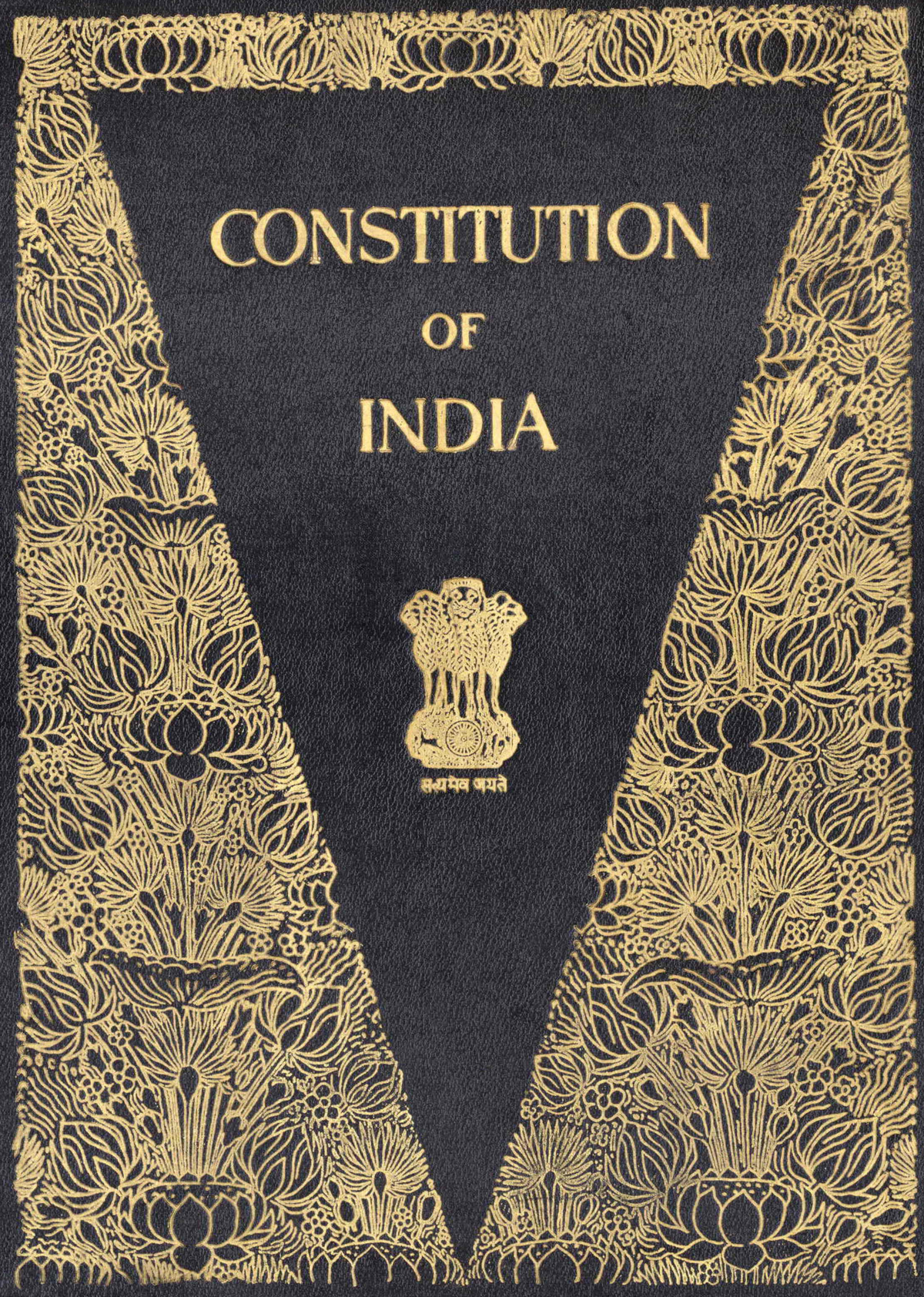Now Reading: Whether Judiciary is considered ‘State’ concerning Article 12 of the Constitution?
-
01
Whether Judiciary is considered ‘State’ concerning Article 12 of the Constitution?

Whether Judiciary is considered ‘State’ concerning Article 12 of the Constitution?
Introduction:
The Indian constitution grants certain Fundamental Rights to its citizen, enabling them to live with dignity and integrity and promote the idea of political democracy. These rights are enshrined in Part III of the constitution running from Article 12 to 35. Part III is described as the Magna Carta of India. It contains a long list of justiciable fundamental rights and is essential for individuals’ overall growth (material, intellectual, moral, and spiritual). Therefore, fundamental rights are given to all without discrimination on any grounds of sex, race, caste, religion, place of birth, or any of them.
It is pertinent to note that these rights are justiciable against the ‘State.’ In case of any violation, a writ petition can be sought, under article 32 or 226, to obtain judicial decisions regarding the same. Thereby to answer the purpose of this paper, it is essential to understand what comes within the ambit of the expression ‘State.’
State:
The Indian Constitution defines ‘State’ in Article 12 –
“Unless the context otherwise requires, the term state includes the following-
Executive and legislature of the union and states; all local or other authorities within the territory of India or under the control of Government of India.”[1]
The law dictionary defines it as a body politic or society of men united together to promote their mutual safety and advantage by their combined strength’s joint efforts.
Individuals need the fundamental rights for the State’s actions, which has the caliber of affecting these basic rights, which are a crucial aspect of an individual’s liberty and integrity in a democratic setup. Therefore, constitutional rights are generally applied vertically, acting as a citizen’s weapon against the State, and have been made directly enforceable only against bodies covered by the ‘State’ definition.
The mention of all the parties in Article 12 denotes that these bodies can violate the fundamental rights of the citizens and an individual to seek remedy for any such violation in the form of writ petitions. Here, the question arises whether the Judiciary, an organ of the State itself, is termed as the protector and guarantor of fundamental rights, capable of violating them. The expression is not conclusive and can include other bodies as well.
What it includes:
While defining this Article’s scope, Dr. BR Ambedkar said that fundamental rights would be binding on every authority. By the word ‘authority,’ he meant all bodies with the power to make laws or the power to have discretion vested in them.[2] Article 12 of the Indian Constitution mentions that the term State includes the Central and State Governments, Parliaments and Legislatures, and all local or other authorities functioning under India’s Government or Indian territory.
Executive and legislature of the central government and state governments
This includes the Union and State Governments, India’s president, and the Governors of State, which forms the Executive part. The term Government also includes departments of the Government and institutions under the control of any such departments.
Local authorities
This has been defined under section 3 of the General Clauses Act and includes bodies like:
1. Municipalities- municipal corporations Nagar Palika, Nagar panchayat
2. Panchayats zila panchayats Mandal panchayats gram panchayats
3. District boards
4. Improvement trusts etc.
Other authorities:
This term can be interpreted as those who have the power to make laws and regulations and the power to enforce them. There have been many attempts to solve this term. Initially, the scope was very narrow. It included bodies which bodies of a like nature, i.e., ejusdem generis; this meant that only bodies which had a governmental function or sovereign function were to be included. It cannot involve a person, natural or juristic. But later, this rule could not be used because there was a lack of common genus in the named bodies, and hence, they could be placed in one category as a rational basis. With more time and several more cases, the Judiciary widened the scope of this expression. Therefore, several issues have set up guidelines, falling under which a body is termed ‘State.’
In R.D. Shetty v International Airport Authority of India,[3] the court laid down the following test while trying to determine whether a body is an agency or instrumentality of the Government:
· Wherein Financial resources of the State are the chief funding source.
· Existence of deep and pervasive state control
· The functional character being governmental.
· If the body or department of Government is transferred to a corporation
· Whether the corporation enjoys monopoly status, which is State conferred or State protected
These tests are not conclusive but illustrative only and will have to be used with care a caution and should not be stretched so far as to bring in every autonomous body with some nexus with the Government within the sweep of Article 12.
In Ajay Hasia v Khalid Mujib[4], the court said that the emphasis should be on how it is created by why it has been brought into existence. It is immaterial whether the corporation has been created by a statute or under law.
In Pradeep Kumar Biswas v Indian Institute of Chemical Biology,[5] the guidelines were:
· The principles laid down in Ajay Hasia are not rigid, so if a body falls within any of them, it must be ex hypothesi be considered to be a state within the meaning of article 12.
· If the body is financial, it is administratively dominated by or under the control of the Government.
· Such control must be particular to the body in question and must be pervasive.
· Whether under statute or otherwise, Mere regulatory control would not serve to make a body a part of the State.
Broadly applying these guidelines:
· The courts are created by a statute, Art 124-147. (composition and jurisdiction)
· The expenses of the courts are charged from the consolidated fund of India.
· The court enjoys a monopoly in the field, and such status is State conferred, and State protected.
· All functions of the courts are public functions.
· It is an independent body. There is only regulatory control of the Government.
Whether Judiciary is ‘State’?
The Indian Constitution under Article 12 does not explicitly mention the term ‘State,’ which gives them the liberty to pass judicial decisions (decisions issued by courts concerning writ petitions or matters of fundamental right contravention brought before it) which might contravene the fundamental right.
The position of Judiciary concerning Article 12 depends upon its judicial and non-judicial decisions wherein if the Judiciary is deciding cases it cannot be brought under the expression state while performing its non-judicial functions they are included within the definition of State, since if the courts are entirely exempted from the State, then it would have an unsurmountable power to make laws that contradict fundamental rights. This is supported by Article 13, which provides that any law made in contravention of fundamental rights is void, and since courts have the power to make laws, this implies that they are State about this function. On the other hand, Article 141 purports that the supreme court’s decree binds upon all courts within India’s territory. Therefore, supreme courts’ decisions cannot be questioned, but the findings of subordinate courts can be challenged if they violate fundamental rights.
In the case Naresh Sridhar Mirajkar v State of Maharashtra.[6], the petitioner contended that the high court had violated his art 19(1)(a), it was held that there was no violation of fundamental right even if a court is the ‘State’ under Article 12, ‘a writ under Article 32 cannot be issued to a high court of competent jurisdiction against its judicial orders, because such charges cannot be said to violate the fundamental rights. What a judicial decision purports to do is decide the controversy between parties and nothing more. The court noted that Judiciary, while exercising its rule-making power under Article 145, would be covered by the expression ‘State’ covered by the expression state within the meaning of Article 12. Still, while performing its judicial decisions, it is not included. The court relied on the Ujjam Bai v State of UP, [7]Judgment wherein it was held that a quasi-judicial or judicial body in the exercise of its functions could not violate fundamental rights. Therefore, a writ of certiorari cannot be issued against a high court. It has been held that if an order passed by the Supreme Court violates the constitutional rights of the citizens and is against the principles of natural justice, it should be corrected by ex debito justitiae (i.e., as a matter of freedom), and it is not amenable to be updated by the writ jurisdiction under Article 32 of the Constitution.
In Rupa Ashok Hurra v Ashok Hurra[8], the Supreme Court reaffirmed and ruled that no judicial proceeding could be said to violate any fundamental right. It was said to be a settled position of law that superior courts of justice do not fall within the ambit of ‘State’ or other authorities under Article 12. Therefore, it can rightly be said that while courts perform their administrative function, they are within the State’s definition and cannot violate any fundamental rights of the citizen. Still, when they give judicial decisions, they do not come within the meaning of State.
When talking about part IV of the constitution, the courts have differed in opinion in State of Kerala v N.M. Thomas,[9] held that the courts’ decision must “inform and illuminate” the court’s interpretational task, based on the view that they are State under art 12. Therefore, it was inferred that the Judiciary is ‘state’ when talking about part IV of the constitution.
The National Commission to Review, the Working of the Constitution (NCRWC), has recommended that an explanation be added to Article 12 wherein the word ‘other authorities’ would mean the authorities whose functions relate to a public nature.
Conclusion:
The Judiciary position is still very ambiguous when we talk about Part III of the constitution, but efforts have been made and precedents laid down to clarify them. The Judiciary is one of the Government’s three organs, and its purpose gives it an immense amount of power over the citizens. The Judiciary must ensure that the other two organs should not violate any basic or fundamental rights. The duty lies with the courts to clarify Article 12 to ensure that it does not infringe any right while performing its duties.










